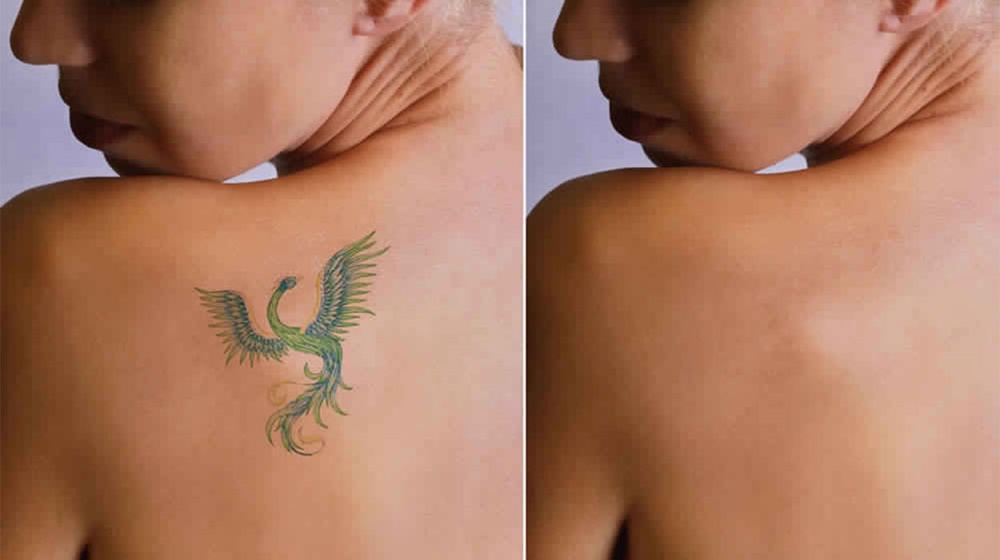Tattoo removal is a process to eliminate or fade the appearance of a tattoo from the skin. There are several methods available for tattoo removal, each with its own advantages and considerations. It's important to note that complete removal of a tattoo may not always be possible, and the effectiveness of the removal process can vary based on factors such as the type and color of the ink, the age of the tattoo, and the individual's skin type.
Here are common methods of tattoo removal:
-
Laser Tattoo Removal:
- This is the most common and widely used method for tattoo removal.
- The process involves using lasers to break down the tattoo ink particles into smaller fragments, allowing the body's immune system to gradually eliminate them.
- Multiple sessions are usually required, spaced several weeks apart.
-
Intense Pulsed Light (IPL) Therapy:
- Similar to laser therapy, IPL uses high-intensity light to break down tattoo ink.
- It may be effective for certain colors, but its efficacy can vary.
-
Dermabrasion:
- Dermabrasion involves removing the top layers of skin with a high-speed rotary device, essentially "sanding" away the tattoo.
- This method is less common today due to its potential for scarring and changes in skin texture.
-
Surgical Excision:
- In this method, the tattoo is surgically cut out, and the surrounding skin is stitched back together.
- This is typically reserved for smaller tattoos, as larger ones may require a skin graft.
-
Topical Treatments:
- Various creams and ointments claim to fade tattoos over time, but their effectiveness is often limited.
- These products may contain ingredients like acids or abrasives to help break down the ink.
-
Salabrasion:
- This is an older, abrasive method that involves applying a salt solution to the tattoo and then using friction, often with a tool or gauze, to remove the tattooed skin layers.
Important considerations:
-
Pain and Side Effects: Tattoo removal procedures can cause discomfort, and side effects may include redness, swelling, blistering, and changes in pigmentation. Scarring is also a risk with certain methods.
-
Multiple Sessions: Complete tattoo removal often requires multiple sessions spaced several weeks apart, especially with laser removal.
-
Ink and Tattoo Characteristics: The type, color, and depth of the tattoo ink, as well as the size and age of the tattoo, influence the success of removal.
-
Professional Consultation: Consultation with a qualified dermatologist or a laser specialist is crucial to assess the tattoo, discuss available options, and determine the most suitable approach based on individual factors.
It's important to manage expectations, as complete removal may not always be achievable, and some scarring or changes in skin texture/color may occur. Always seek the advice of a qualified professional when considering tattoo removal to ensure a safe and effective process.



